.

The 'dropship' quadcopter and mockup rover used for testing ESA's latest StarTiger project, Dropter. The dropship steers itself to lower a rover gently onto a safe patch of the rocky martian surface. Starting from scratch for the eight-month project, the Dropter team was challenged to produce vision-based navigation and hazard detection and avoidance for the dropship. It has to identify a safe landing site and height before winching down its passenger rover on a set of cables. Flying to a maximum height of 17 m, the dropship comes gently down to 10 m above the ground, where it begins lowering the rover on a 5 m-long bridle, coming lower until the rover touches down. Then it returns to a safe altitude.
The test platform is about 1 m by 1 m in size, with 41 cm diameter rotors. Its total lift-off mass is about 16.8 kg, with the dropship weighing 13.2 kg and the rover 3.6 kg. Maximum flight time is limited to about 15 minutes due to battery capacity.
.
The dramatic conclusion to ESA’s latest StarTiger project: a ‘dropship’ quadcopter steers itself to lower a rover gently onto a safe patch of the rocky martian surface.
StarTiger’s Dropter project was tasked with developing and demonstrating a European precision-landing capability for Mars and other targets.
The Skycrane that lowered NASA’s Curiosity rover onto Mars showed the potential of this approach, precisely delivering rovers to their science targets while avoiding rock fields, slopes and other hazards.
“StarTiger is a fresh approach to space engineering,” explains Peter de Maagt, overseeing the project. “Take a highly qualified, well-motivated team, gather them at a single well-equipped site, then give them a fixed time to solve a challenging technical problem.”
.
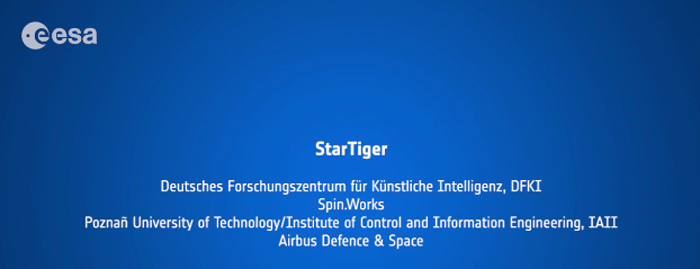
Frams: ESA-Video
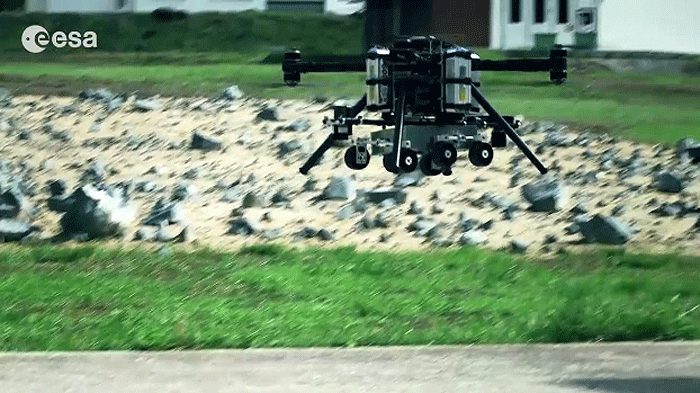
.
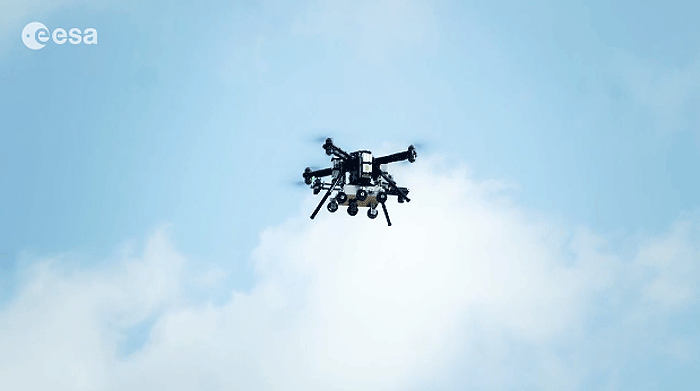
.
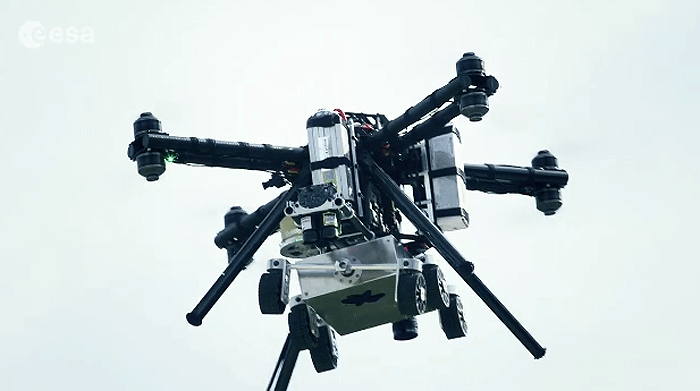
.
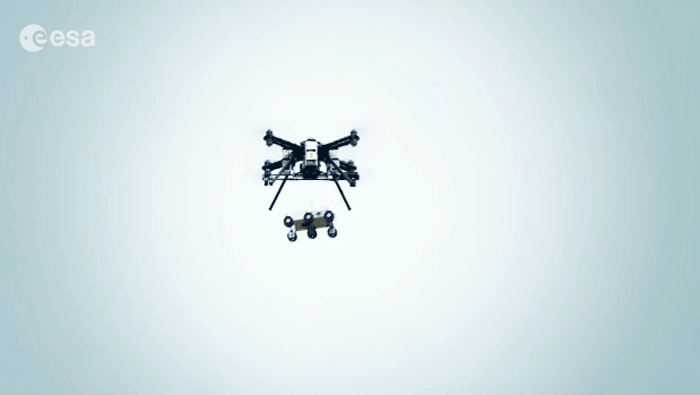
.
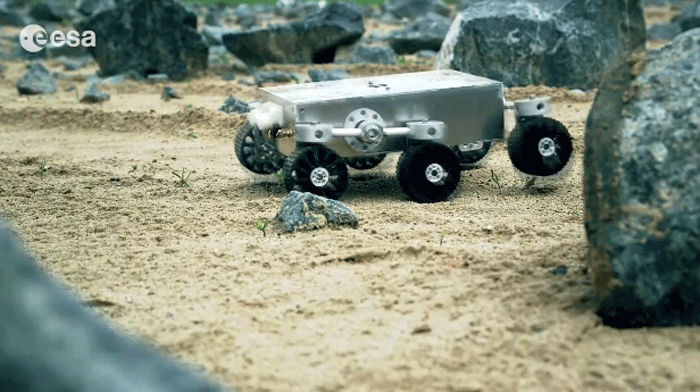
This latest team was hosted at Airbus Defence & Space’s facility in Bremen, Germany, joined by engineers from the German Research Center for Artificial Intelligence, Portgual’s Spin.Works aeronautics company, and Poland’s Poznań University of Technology Institute of Control and Information Engineering.
Starting from scratch for the eight-month project, the Dropter team was challenged to produce vision-based navigation and hazard detection and avoidance for the dropship.
It has to identify a safe landing site and height before winching down its passenger rover on a set of cables.
Flying to a maximum height of 17 m, the dropship comes gently down to 10 m above the ground, where it begins lowering the rover on a 5 m-long bridle, coming lower until the rover touches down. Then it returns to a safe altitude.
Flight testing took place at Airbus’s Trauen site in northern Germany, which back in the 1940s was the scene of spaceplane pioneer Eugen Sänger’s rocket experiments.
A 40 m by 40 m Mars-scape was created, littered with hazardous rocks, where the dropship had to pick a safe spot to deliver its passenger.
The dropship was customised for the project from commercial quadcopter components, with a smaller drone used for preparatory indoor testing.
Using GPS and inertial systems to fly into position, it then switched to vision-based navigation supplemented by a laser range-finder and barometer to land its rover autonomously.
This demonstration having proved the concept, the dropship approach is now available for follow-on development by planetary missions to come.
StarTiger stands for ‘Space Technology Advancements by Resourceful, Targeted and Innovative Groups of Experts and Researchers’ working within the Agency’s TRP Basic Technology Research Programme.
It brings team members together on a single site to work on a set challenge, aiming to produce a working prototype by the end of the project’s time limit.
Quelle: ESA
5280 Views
